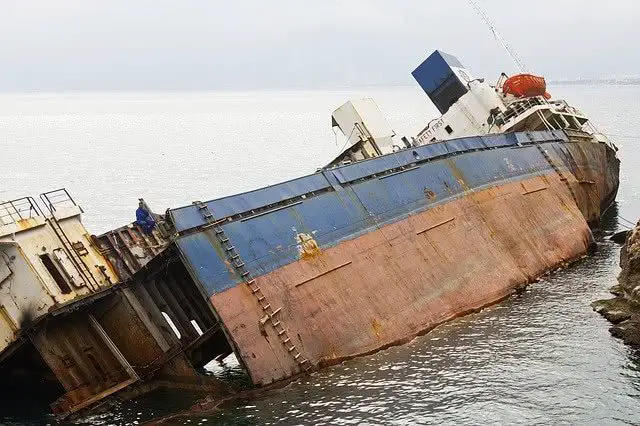Marine pollution is defined as the direct or indirect introduction of wastes, substances or energy, including man-made underwater sound sources, which results or is likely to result in harmful effects on living resources and marine ecosystems, loss of biodiversity, risks to human health, obstacles to maritime activities, including fishing, tourism and recreation and other uses of the sea, impairment of water quality in terms of use, and reduction of the amenity value of the marine environment.
A distinction is made between pollution generated by chemical substances and pollution generated by aquatic waste. Aquatic wastes include any domestic, industrial, natural solid that is found in the marine and coastal environment. It can be of very varied nature: waste floating on the surface or in the water column, waste deposited on the bottom, waste washed up on beaches and the coast. 80% of marine pollution is of land-based origin.

Pollutants are transported by water runoff depending on the dynamics of the catchment areas, but also by the air due to the wind regime, as marine surfaces receive many atmospheric deposits. However, saturation phenomena generate growing ecological disorders to the point of threatening all other activities.
How can we do something about it?
The first piece of advice we can give about the extent of the impacts of oil spills on our ecosystem is prevention. Preventing potential oil spills is the best way to limit our impact on the marine ecosystem.
However, when this measure proves to be impotent following an accident, for example, the Erika disaster, various operations must be put in place to reduce as much as possible the many negative impacts of an oil spill.
Interventions are therefore carried out according to the urgency of the situation, but also according to the stakes and technical possibilities, which can lead to dangerous and toxic actions for the environment.
In order to maximize the chances of limiting the impacts on our environment, oil professionals use chemical dispersants.
It is true that when coastlines are threatened, the aim is to prevent the arrival of slicks in areas considered “sensitive”. To do this, chemical dispersants are often used to reduce the slick.
Indeed, dispersants are products which accelerate the natural dispersion of oil by the swell, helping to break up the slicks present on the surface into a multitude of droplets.
Contrary to popular belief, chemical dispersants certainly help to reduce the slick but are almost as toxic and dangerous for our ecosystems as oil. Their toxicity has been proven.
If the slick is not too large and the context allows, various booms are installed to stop the slick from spreading and to gather the oil before pumping it out.
If the oil slick is made up of heavy oil floating between two waters, trawls must be used to recover the oil.
Finally, if all these devices are not sufficient, booms are often set up around the coast and sensitive sites.
Afterward, all that remains to be done is to clean the beaches and treat the oiled animals.
This clean-up requires a large number of manpower equipped with different materials such as shovels, shovels or buckets, as well as non-toxic animal washing solutions such as Shampoo and ecological demulsifiers such as DPW-7 to separate the oil from the seawater and remove it from the rocks.